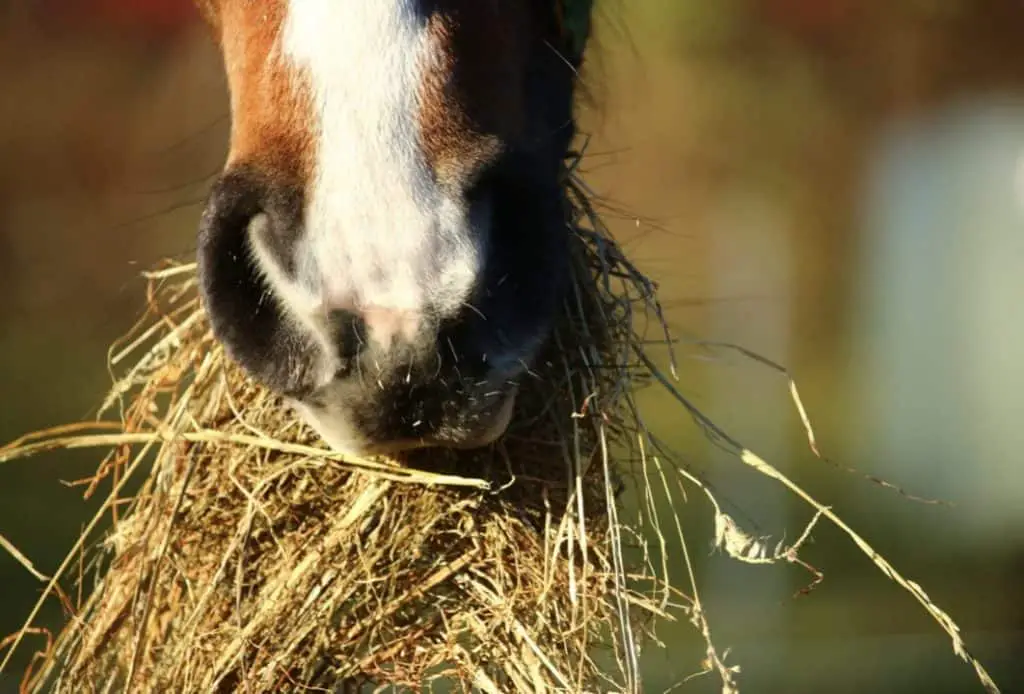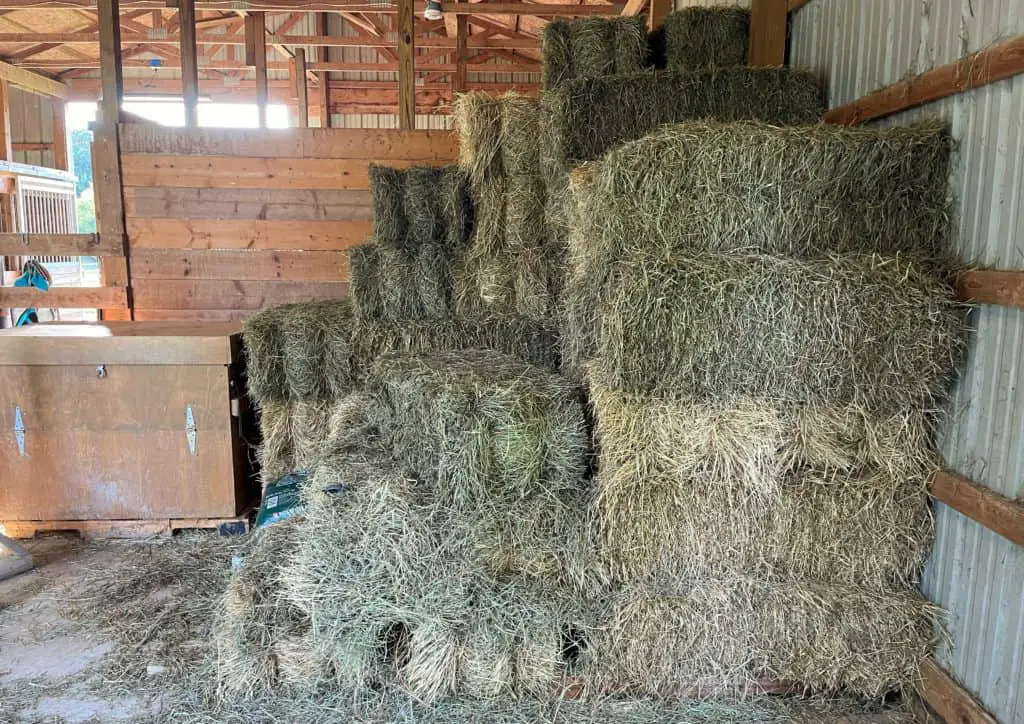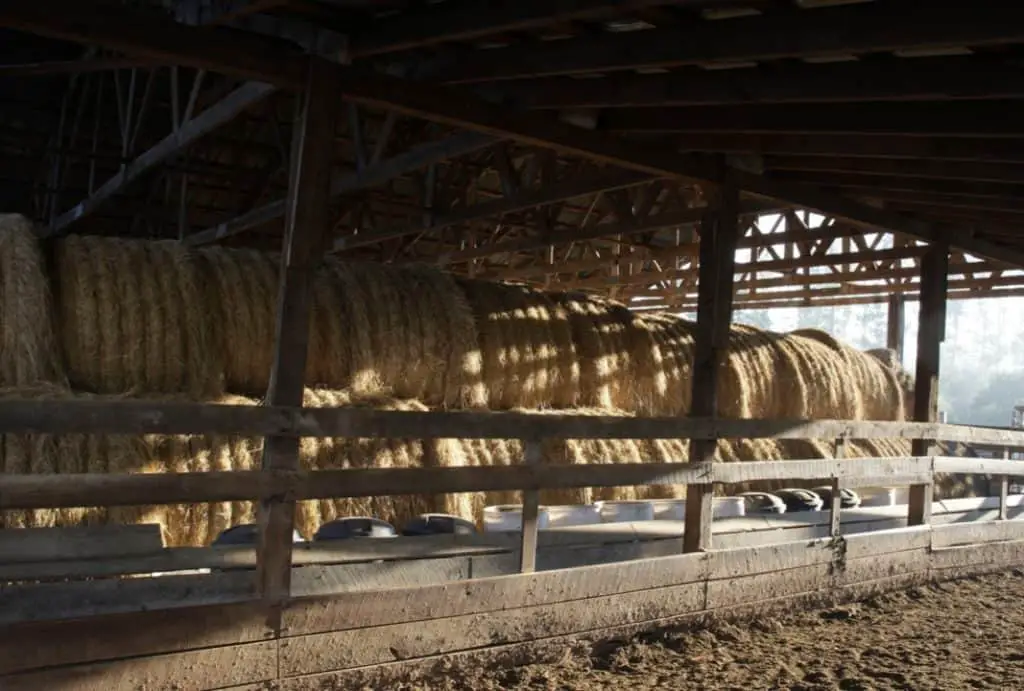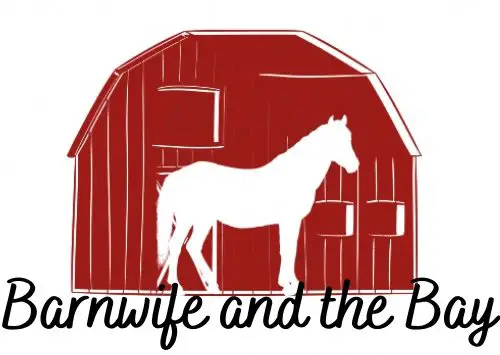
The quest for hay and the ever-increasing expense is the source of many a headache and anxiety attack for horse owners. In some parts of the world hay is downright scarce.
So, if you’ve finally found a hay supplier for good quality horse hay (or made your own), you want to make sure your hay is stored properly to protect your initial investment and make sure as little as possible goes to waste before your horses have a chance to eat it.
Below are the 16 most important things to know about proper hay storage. Your horses will get the most out of your hay supply and stay safe while eating it.
1. Hay keeps indefinitely if stored properly indoors
If you don’t use all your hay in one year, there’s no reason to throw away what’s leftover. As long as it’s been stored properly indoors, it will still be good to feed your horses for years to come. It may accumulate some dust if your barn or hay building is dusty, but that should not be a problem unless your horse has a very specific sensitivity. Also, don’t worry if the color changes over time, the nutritional content stays the same. If you’re worried about a particular batch of hay that’s been stored for a long time, it’s always a good idea to get it analyzed. The video below shows how to take a hay sample for analysis.
Follow these other rules to make sure your hay will keep indefinitely:
2. If possible, store it inside a building
The best way to store hay is inside a barn or other well-ventilated building, to protect it completely from the weather. Hay stored inside is usually subject to about 2-7% dry matter loss.
Ideally, to prevent risk to your horses and tack from fire, hay should be stored in a separate building. However, most of us don’t have the option of hay barns. A hay storage area within the existing barn allows easy access at feed time.

Hay stored in the barn is protected and convenient
3. Prevent roof leaks and rain blowing in
Excessive moisture will cause hay to mold. Horses are extremely sensitive to mold compared to other livestock, and cannot be fed hay that has molded.
4. Raise the hay off the bare ground
Hay will mold much more quickly where it is in contact with the ground. Pallets are the best choice, but tarps or even plastic bags are better than nothing as a barrier to prevent ground moisture from coming up into the bales.
5. Allow air circulation under the bales
Raise stored hay bales on pallets to allow air flow and prevent mold growth. If pallets are not available, opening one bale and spreading the loose hay on the floor before stacking the rest will allow some air circulation under the stack.
6. When buying hay, find out the amount of moisture in the bales
The amount of moisture in the hay at baling impacts the chance of what is called primary mold. Grass and alfalfa standing in the field has about 85% moisture. After cutting, it should be dried to less than 15% moisture. Chances of primary mold are miniscule at this moisture content. Most modern hay balers are equipped with moisture probes and your hay supplier should be able to tell you the moisture content. If not, you can send it to a lab for analysis.
7. Monitor the interior bale temperature
Primary mold is the main fire hazard from hay. Check frequently if the bales feel warm to the touch. Some very small amount of warmth detectable on a cold day is normal, but if there is significant heat, that bale might be moldy. Inspect the inside carefully before feeding it, and take steps to prevent fire.
8. Use oldest hay first
Even though hay can be kept indefinitely, it’s always a good idea to use the oldest hay first, to keep losses at a minimum.
9. Minimize larger wildlife access to the hay
Do what you can to animal-proof your hay storage area. Opossums and raccoons can spread diseases to horses.
Round bales: outdoor storage
Round bales can be stored outside with as little as 7% or as much as 35% loss to weathering. Follow these rules to keep dry matter losses low.
10. Buy a dense bale
A denser bale will not allow water to penetrate as deeply into the interior of the hay.
11. Buy large bales
Buying the largest bale you can will minimize the percentage of each bale lost to weathering.
12. Try to get bales wrapped with net wrap (or B-wrap)
Instead of sisal twine or plastic twine, look for bales wrapped with net wrap or B-wrap. Wraps are superior at shedding water, keeping it out of the inside of the bale. This means much less dry matter loss during storage.
13. Line bales up end-to-end
Store your round bales outdoors in a line with flat ends touching. This minimizes surface area exposed to the elements and maximizes water shedding.

Store round bales end-to-end if they are not in an enclosed building
14. Never store bales under trees
You don’t want rain dripping from the tree onto the hay, or tree debris that can hold water accumulating on your hay.
15. Provide good drainage
Allow water to drain away from the bottom of the bales by raising them on wooden pallets or railroad ties. Alternatively, create a 4-6 inch coarse rock base on which to place hay bales.
16. Cover with a tarp
If you can, use a tarp or other cover to protect the tops of the stored bales from the worst of the weather.
So now you know the most important rules for how to store hay, but what if you haven’t yet made the decision on which bale type to buy and feed?
Each bale shape has its own pros and cons.
Here are some of the differences between small square bales, round bales, and large square bales:
All of the different bale types can be made up of any type of hay. You can find any of the three types containing alfalfa hay, bermudagrass hay, timothy hay, or grass/alfalfa mixes. They can each be from first, second cutting, or third cutting.
Different Shapes
Small and large square bales are actually rectangular bales, and round bales are short cylinders.
Size of hay bales
Small square bales, or “two-string” square bales, are relatively small bales. They usually measure roughly 14inx18inx36in.
Round bales are really big bales that usually measure roughly 5ft wide and 5ft tall.
Large square bales are big bales that usually measure roughly 36inx40inx7.5ft.
Weight of hay bales
Small square bales usually weigh between 30 and 70lbs, with 50lbs being the average weight.
Round bales usually weigh between 900 and 1,700lbs.
Large square bales usually weigh between 1,000 and 1,500lbs.
Bale of hay cost
Small square bales tend to be the most expensive option per ton of hay.
Round bales tend to be the least expensive option per ton.
Large square bales tend to cost somewhere in the middle between small square and round bales per ton…
Read more about choosing, storing and feeding the different bale types
Like what you’ve learned about storing hay? Jump into these articles too!
